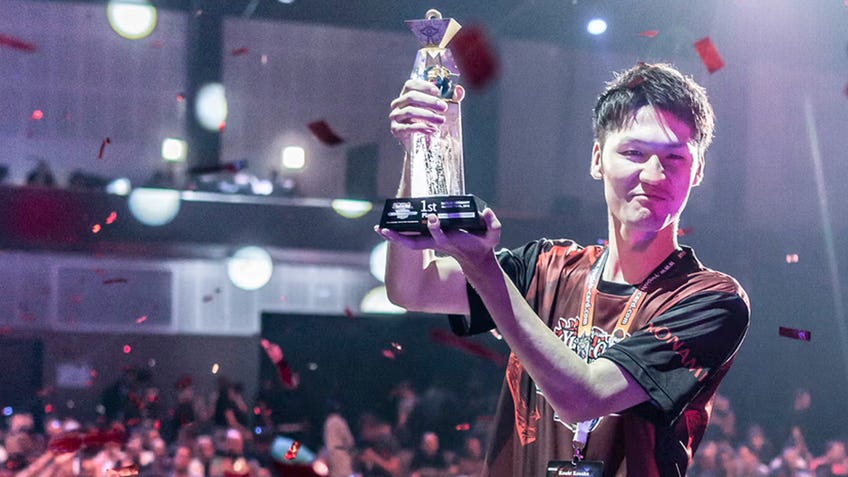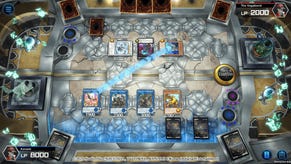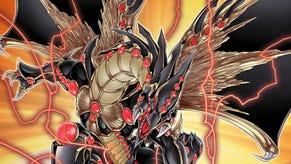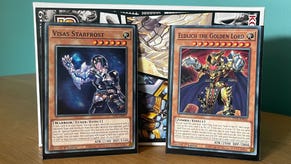Why the Yu-Gi-Oh! World Championship is such a big deal - and why you should be watching
As the tournament of top-tier duellists returns for the first time in four years.
With less than a month to go until the Yu-Gi-Oh! World Championships, where top competitors from around the world will descend on Tokyo for the TCG’s first championship event since 2019, all eyes are on which player (and which deck) will come out on top at this prestigious event.
The long absence due to repeated cancellations for the event as a result of the COVID-19 pandemic make this year’s Worlds not just a chance to crown the ultimate player, but a commemoration of what the game and its players have gone through in recent years. This time in 2020 we were stuck playing Remote Duel championships or lathering ourselves in hand sanitiser and masking up for local events. Now, the world can unite for the game’s 25th anniversary.
Yet there’s more than just the first World Championships in four years to look forward to here. After so long without such an event, it’s easy to forget what makes these events so exciting for competitors and viewers alike. Regional pride, some of the most memorable duels in the history of the game and draws that will make you believe in the heart of the cards - this is what Yu-Gi-Oh! is all about.
Just take a look back to 2019, the last of these events to take place before their unintended hiatus. Held in Berlin, Germany in the summer of that year, with Japanese duelist Kouki Kosaka emerging victorious with a Salamangreat deck in a mirror match against the Taiwanese duelist Chia Ching Wang, the event also saw competition in the virtual realm through the Duel Links mobile game.
This was far more than a mere collection of top duelists in a silent, closed-off room for two days of dueling (only invited duelists could participate, meaning the tournament consisted of just 28 participants). Once the event entered day two and the crowd were invited to watch the matches in real time, the spectacle was emphasised with the voice actors for Yugi and Kaiba reading lines and performing mock duels to hype up the audience, and there was even a DJ set featuring a remix of the original anime theme.
This is what the championships were and always have been about; the celebration of a moment in the card game’s history, and the passion fans of all skill levels have for its legacy and competition. (Even if technical issues with the livestream were a noted issue for those forced to watch from afar in 2019 rather than being in the room with the competitors.)
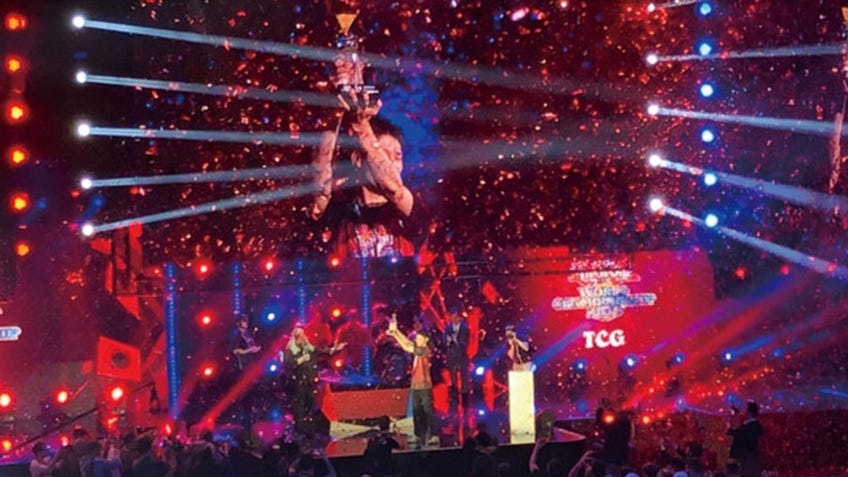
This is something that has continued throughout the history of the game. While Yu-Gi-Oh! can trace its roots all the way back to before the turn of the century in 1998, the inaugural World Championship event took place in 2003 in Madison Square Garden. This was a tournament defined by the infamous Yata Lock deck that catalysed the creation of Yu-Gi-Oh!’s first-ever banlist, and was the card game’s biggest event to date.
For the over 10,000 attendees who packed into the New York arena on finals day in August of that year, attendees were treated to far more than a mere front-row seat to the crowning of the first champion in the game’s history. Attendees were also the first to get their hands on the Yu-Gi-Oh! Stairway to the Destined Duel video game for Game Boy Advance, and could win promotional booster packs and cards by taking part in events coinciding with the championships.
The long absence due to repeated cancellations as a result of the pandemic make this year’s Worlds not just a chance to crown the ultimate player, but a commemoration of what the game and its players have gone through in recent years.
As was reported on the official Yu-Gi-Oh website at the time, events at the venue included a King of Games competition allowing players to compete against invited duelists representing some of the most talented players in the game, an open arena for anyone to pull out a mat and get down to duel, as well as (obviously) a place to buy new cards. May as well, with such a captive audience.
It marked a turn in the game itself too, as another report admitted. They were simpler times, after all; Worlds marked a shift from mere beatdown to an era where “the best monster for your deck is not always the one with the highest ATK value”.
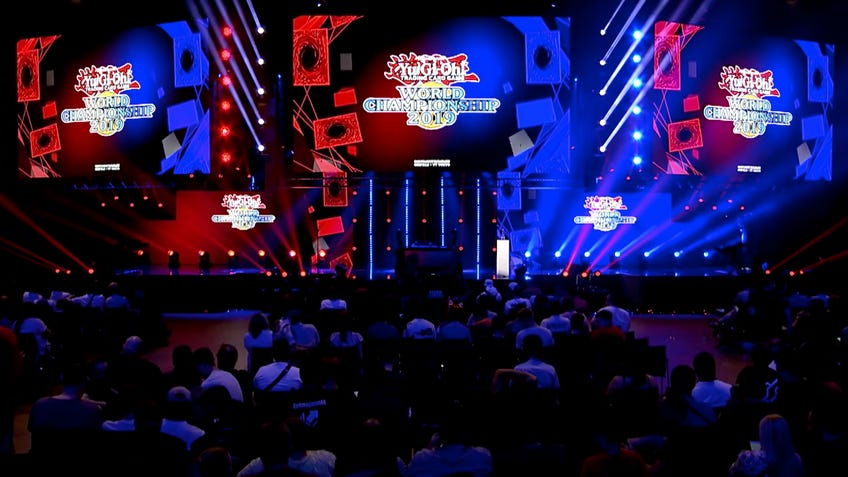
Tracking the winning decks over the years is a helpful indication of the game’s evolution. Some of these decks are loathed (the Dragon Ruler deck that won in 2013 piloted by Shin En Huang) just as much as others are loved (2005’s GOAT deck by Markou Miltiadus or 2019’s Salamangreat deck by Kosaka), yet each undoubtedly capture the era these events took place in. In 2013, it was near-impossible to defeat Dragon Rulers even with the minimal resistance offered by Spellbooks, earning them that place in history regardless of general sentiments against the deck at the time that linger for those who remember the format today.
Side events like those seen in 2003 and some other events were something sorely missing at the 2019 championships, and have swung in and out of existence for non-player attendees over the years since the game was successfully able to pack out arenas like that in New York. This doesn’t mean that there’s no way to celebrate if you can’t attend these events. Recently, many officially-partnered stores held events in commemoration for the big day with their own exclusive prize cards and mats, allowing those not able to attend for themselves to at least get into the spirit of the event (even utilising the same banlist, a blend of the lists from all regions of the game made specially for each World Championship).
It’s hard not to look at this grand return as a chance to reminisce and consider what’s next for the illustrious game.
That being said, just as the championships make their return this year, so do in-person events for attendees, taking advantage of the expanded space offered by the chosen Tokyo Big Sight venue. Qualifying players not participating in day two are open to duelling against attendees, a call back to the King of Games events present at the 2003 incarnation of the Championships. Beyond this, smaller tournaments for Duel Links, OCG and Master Duel will feature alongside a Rush Duel event befitting the popularity and success of the format in the region. These events continue throughout the day even after public viewing of the finals get underway in the afternoon.
And of course, there’s a store, with exclusive duel mats and deck sleeve protectors on offer alongside booster boxes for a number of recent sets. On the special stage prior to the main event, Rush Duel gets another chance to shine, with the finals of the Japanese Galaxy Cup taking place in the morning in front of the attending crowd before the main games get underway. The tournament is split between an under-12 and general category, with both finals taking place that morning - making it almost like an unofficial fourth championship alongside the official events being decided that day.
Whether you’re in the room or watching the official livestream from anywhere in the world, commentary will be available for all to enjoy. Not only that, one thing unites all during this year’s event: Yu-Gi-Oh!’s momentous upcoming 25th anniversary. Whether that’s in the venue entry gift of two quarter-century rare icons in Dark Magician Girl and Magic Cylinder or the availability and release of numerous 25th Anniversary special products in the lead up to this year’s event, it’s hard not to look at this grand return as a chance to reminisce and consider what’s next for the illustrious game.
Anime fans can hold their own iconic piece of card game history, whether that be through made-to-order Pots or an actual Kaiba Corp briefcase, and classic cards never reprinted or even made available at all are making a return in all-new releases. Classic booster packs are being re-released for the first time in years, and cult monsters are returning with their own archetypes. (We see and taste you, Hungry Burger!) Who knows what Konami has in store to surprise audiences during finals day to mark this anniversary on the biggest stage in the Yu-Gi-Oh! calendar.

Whatever happens, this is an event not to be missed. With the winners and top players from qualifiers in Europe, America, Asia and all corners of the globe descending on Japan’s capital for a closely-guarded fight for glory, the skill on display at this event (alongside the unquestionable variety in competition decks) will be a treat for anyone interested in seeing strategic gameplay at the highest level.
Just as each deck on display represents the era they were at their peak, the best deck of each era winning every official championship, even the very shape this tournament takes, has evolved with the game. New audiences have discovered Yu-Gi-Oh! via the virtual realm, so now multiple virtual events are included in competition on the World Championship stage. In the years since the first ever event two decades ago, more regions like South Korea have embraced Yu-Gi-Oh!, bringing representatives of their own to this event.
Nothing represents the game we all love like this. Surely that’s reason enough to tune in, right?
